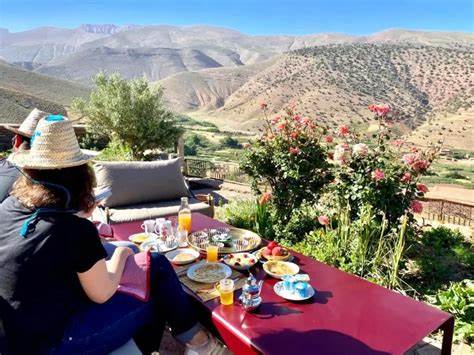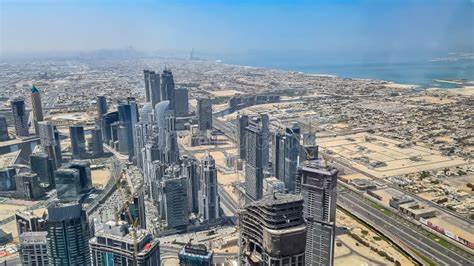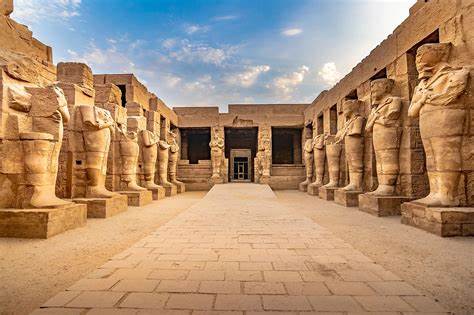Peru, a country located on the western coast of South America, is a land of diverse landscapes, rich history, and vibrant culture. Known for its ancient civilizations, breathtaking natural beauty, and unique wildlife, Peru is a destination that offers an unforgettable adventure for any traveler. From the iconic Machu Picchu to the bustling streets of Lima, Peru has something to offer for every type of traveler.
Start your journey in Lima, the capital city of Peru, which is a blend of old-world charm and modern attractions. Lima is known for its exceptional cuisine, which is a fusion of indigenous ingredients and international influences. Be sure to visit the Barranco district, which is famous for its colorful buildings, vibrant street art, and bohemian vibe. The Historic Centre of Lima is also a UNESCO World Heritage site, where you can explore colonial-era architecture, including the Plaza Mayor and the Cathedral of Lima.
While in Lima, don’t miss the chance to sample ceviche, a traditional Peruvian dish made with fresh raw fish marinated in citrus juices and served with onions and chili peppers. Pisco Sour, the country’s signature cocktail, is another must-try. You can visit one of the many bars or restaurants offering these delicacies to get a taste of Peru’s culinary scene.
After exploring Lima, head inland to the Sacred Valley, a region in the Andes Mountains that was once the heart of the Inca Empire. The Sacred Valley is home to picturesque towns, terraced farms, and ancient archaeological sites. Ollantaytambo, a town that still retains its Inca-era layout, is a great base for exploring the valley. The Ollantaytambo Ruins, an ancient Inca fortress, offer panoramic views of the surrounding mountains and the valley below.
For a deeper connection to Incan history, visit Pisac, a town known for its impressive Inca ruins and vibrant market. The Pisac Archaeological Site sits high on a mountain, with terraces and temples that provide a glimpse into the ingenuity of the Inca civilization. The local market is a colorful display of handmade goods, textiles, and jewelry, making it a perfect place to pick up souvenirs.
No trip to Peru would be complete without a visit to Machu Picchu, one of the most famous archaeological sites in the world. This ancient Incan city, perched high in the Andes, offers stunning views of the surrounding mountains and lush forests. To reach Machu Picchu, most travelers take a train from Ollantaytambo to Aguas Calientes, a town at the foot of the mountain. From there, a bus takes visitors up to the entrance of the site. For those looking for a more adventurous approach, hiking the Inca Trail is a popular option. This four-day trek takes you through stunning landscapes, including cloud forests, alpine meadows, and Incan ruins, before reaching the majestic Machu Picchu.
Once at Machu Picchu, take your time to explore the site and marvel at the sophisticated architecture and engineering of the Incas. Some of the most famous structures include the Temple of the Sun, the Intihuatana Stone, and the Room of the Three Windows. The views from the site are breathtaking, with mist-covered mountains and lush valleys stretching as far as the eye can see.
After your visit to Machu Picchu, head to the Lake Titicaca region, home to the highest navigable lake in the world. The lake, located on the border between Peru and Bolivia, is a serene destination that offers beautiful views and a chance to experience traditional indigenous cultures. The Uros Islands, located on the lake, are made entirely of reeds, and the Uros people have lived there for centuries. You can visit the islands and learn about the unique way of life of the Uros people, who continue to build their homes and boats from the reeds that grow around the lake.
Another must-visit site near Lake Titicaca is the town of Puno, which is known for its festivals, traditional music, and colorful clothing. Puno is a gateway to exploring the lake and its surrounding areas, and it offers a range of accommodations, from budget hostels to luxurious lakeside resorts.
For nature lovers, Colca Canyon is a breathtaking destination that rivals the Grand Canyon in both size and beauty. Located in the southern part of Peru, Colca Canyon is one of the deepest canyons in the world, twice as deep as the Grand Canyon. The canyon is home to the majestic Andean condor, a bird with a wingspan of over 3 meters. You can visit Cruz del Condor, a viewpoint where you can watch these incredible birds soar through the sky.
For those interested in wildlife, Manú National Park in the Amazon Basin is a UNESCO World Heritage site that offers a chance to see a diverse range of animals and plants. The park is home to over 1,000 species of birds, 200 species of mammals, and countless reptiles and insects. A trip to the park typically involves a guided tour, where you can explore the jungle and visit remote communities that have lived in the region for centuries.
Peru’s cuisine is as diverse as its landscapes, and food plays an integral role in the culture of the country. In addition to ceviche and pisco sour, try lomo saltado, a stir-fried beef dish with potatoes, onions, and tomatoes, or causa, a cold potato dish served with tuna, avocado, and lime. Quinoa, a grain native to the Andes, is another staple of Peruvian cuisine and can be found in many dishes.
Getting around Peru is relatively easy, with an extensive network of buses, trains, and flights connecting major cities and tourist destinations. For those traveling to remote regions, guided tours and private transportation are often the best options. Peru’s hospitality and warmth make it a welcoming destination for all travelers, and local guides are always eager to share their knowledge and insights into the country’s culture and history.
Peru offers a journey through time, nature, and culture. Whether you’re hiking to ancient ruins, exploring vibrant cities, or immersing yourself in the natural wonders of the Amazon or the Andes, Peru is a destination that will leave you with lasting memories and a deeper understanding of the rich heritage of South America.






